This is my first review, and it’s a light-hearted one. The knife before us today is the Okamitsu 55 mm Ginger Knife, which is the smallest hand-forged Japanese kitchen knife that I have come across and is sold at Knife Japan: https://knifejapan.com/iwami-okamitsu-ginger-knife-55mm/.
Specs
Total length: 184 mm
Edge length: 58 mm
Height at heel: 30 mm
Width at heel: 3.5+ mm
Weight: 52 g
Blacksmith: Yamada-san
Construction: Warikomi
Steel, core: Aogami #1
Steel, cladding: Soft iron (nantetsu)
Handle: Zelkova serrata (keyaki) wood
Ferrule: Black plastic
Summary
Most of us have at least a gyuto around 210-270 mm and a petty around 120-150 mm that we use on the cutting board. Conspicuously missing from most of our kits is a smaller sub-100, nay, sub-60 mm knife for the finest on-board tasks. The Okamitsu 55 mm might be the perfect choice to fill this void in your lineup. It also works well in hand off the board for some tasks.
Sold as a “ginger knife”, it is so much more. I threw (miniature) onions, tomatoes, cucumbers, carrots, and even cabbages at it, and it took them in stride. By the end of my tests, I wanted to call it the Little Cabbage Slayer: Chīsana Kyabetsu no Satsugai (according to Google Translate). Maybe it’s just because mine is an oversized 55, coming in at 58 mm, or maybe it is really just that good.
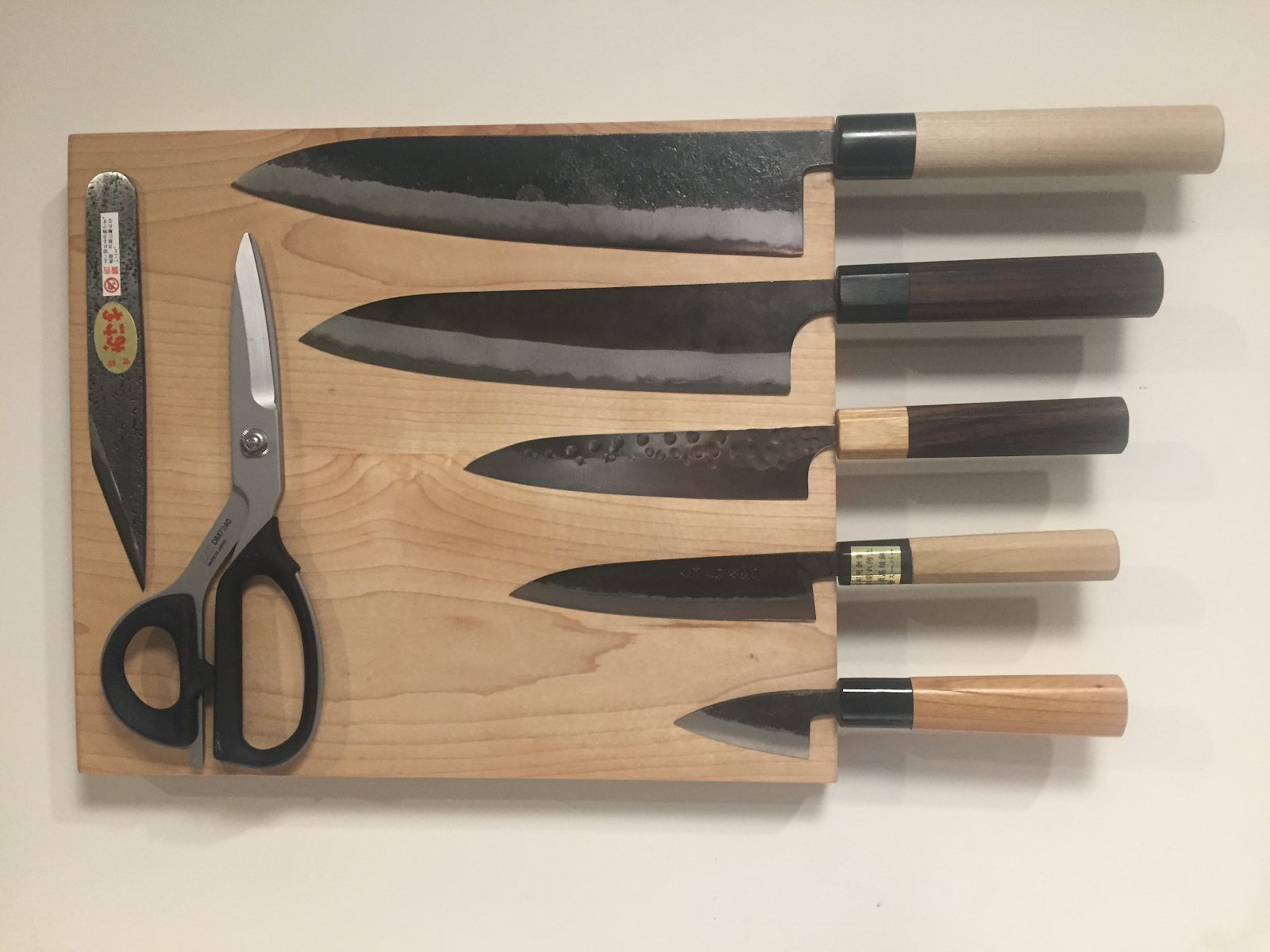
Fit and finish
Compared to the other knives I own, the Okamitsu 55 most resembles my Munetoshi gyuto (comparisons in pics): the fit and finish is rustic and emphasizes the functional. The edges of the spine and choil are rough, and the blacksmith’s finish (kurouchi) remains on the carbon steel cladding. There were no obvious grind issues (e.g., high/low spots), twists, or bends in the blade. The handle needed some beeswax/mineral oil on the ends, and I removed the lacquer from the blade, but the knife was otherwise ready to go. My knife came with a small nick on the edge just shy of the tip. No matter, though; it passed the paper test with the out-of-the-box edge.
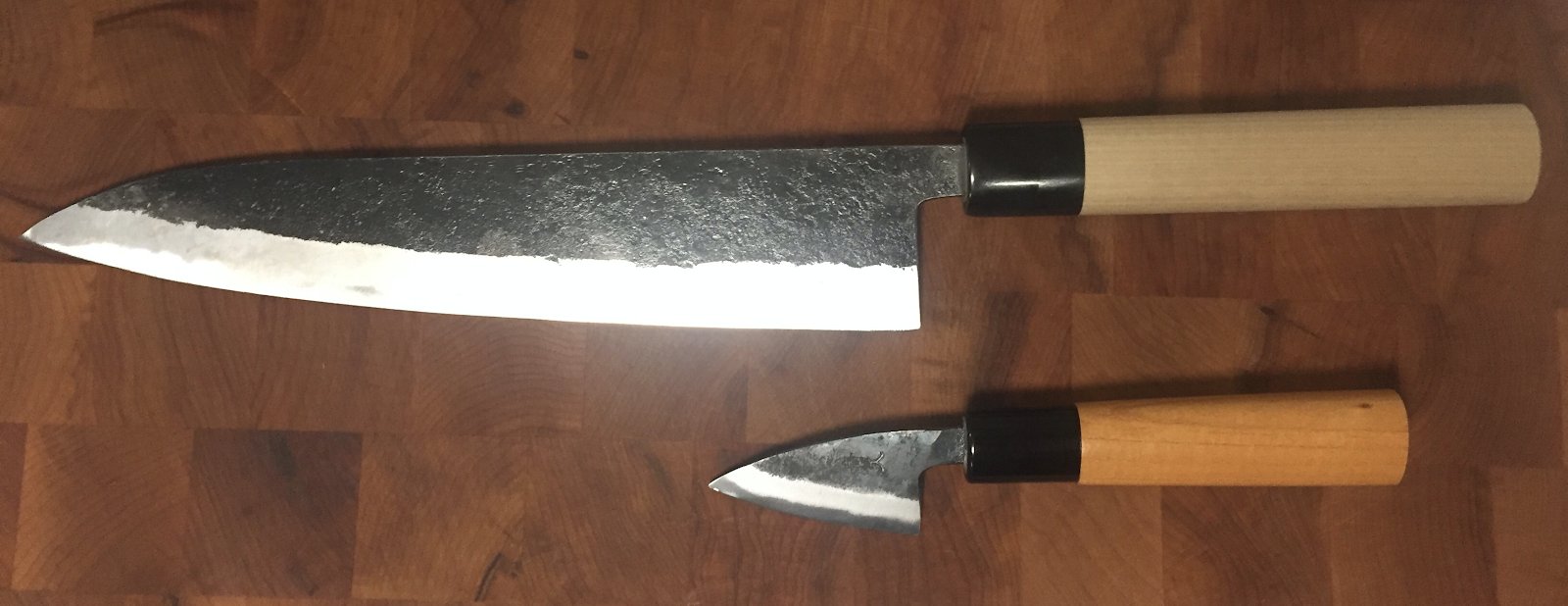

Profile and grind
The profile is a typical gyuto, but in miniature and with the back three quarters of the blade missing. In fact, the edge follows the same curve as the distal end of my Kurosaki AS 210 mm gyuto. Indeed, one wonders if this knife design was conceived when the tip of a gyuto broke off in production and the industrious Yamada-san salvaged it for new purpose. It has a small flat spot at the back and belly through the middle and front. Distal taper along the spine is pronounced, starting quite thick and leading to a relatively thin tip. The grind can be likened to that of a “workhorse” - or ahem, “workpony” - starting thick at the spine, thinning at a relatively constant rate. The secondary bevel is a subtle convex, ground about 60:40.
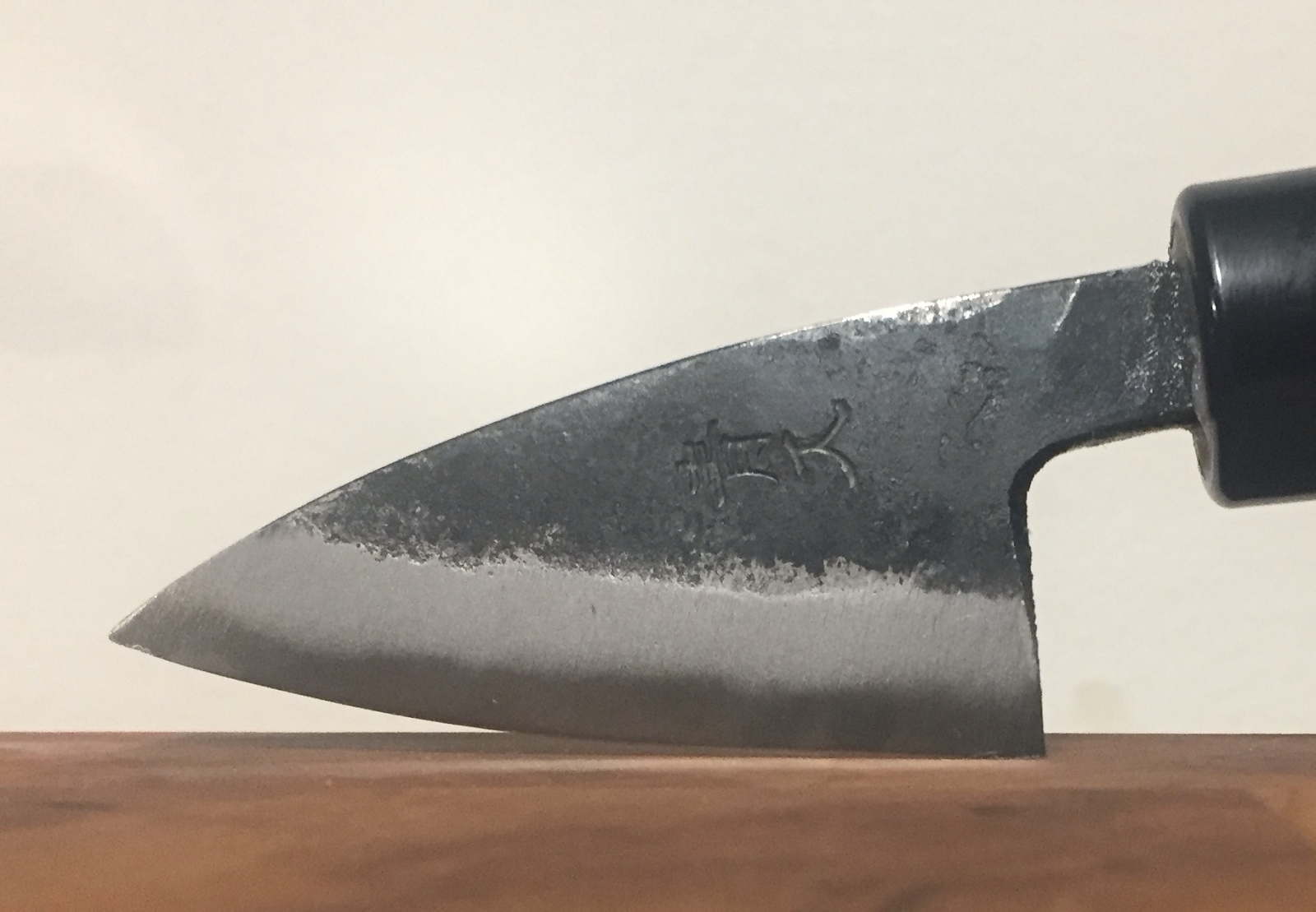
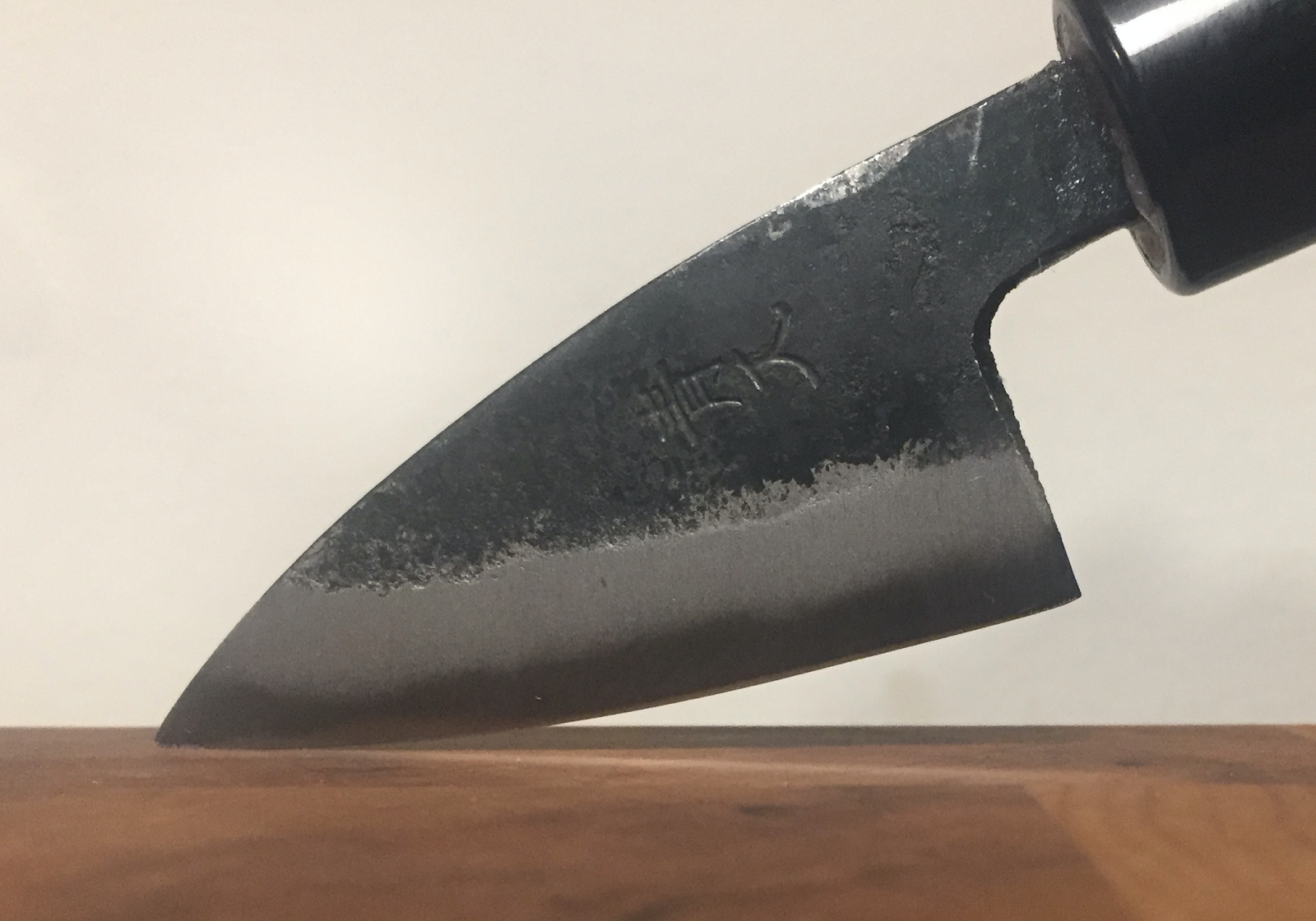

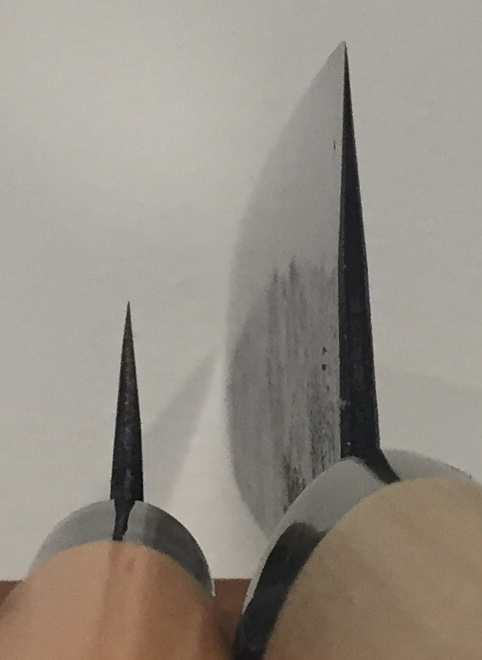
Performance
The Okamitsu 55 handled a variety of product and tasks well. The balance point is behind the pinch grip at the back of the ferrule, making the blade feel lighter and nimbler than it otherwise would be.
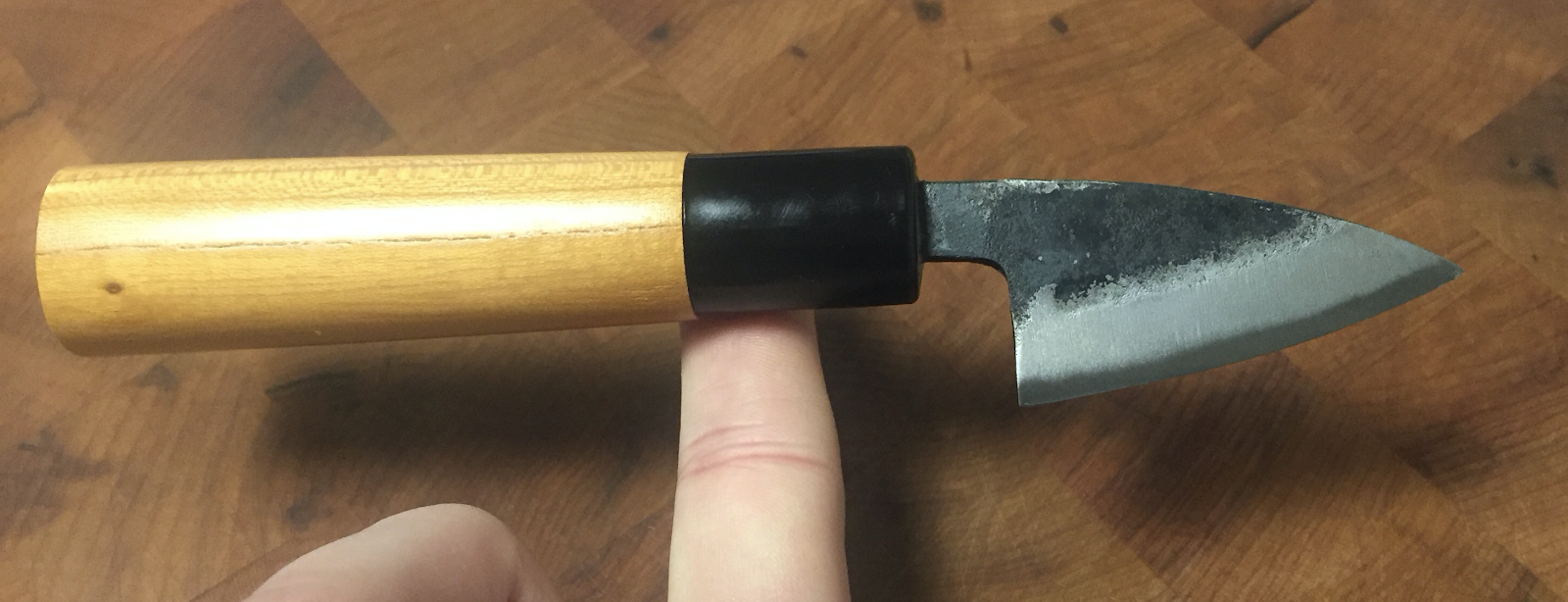
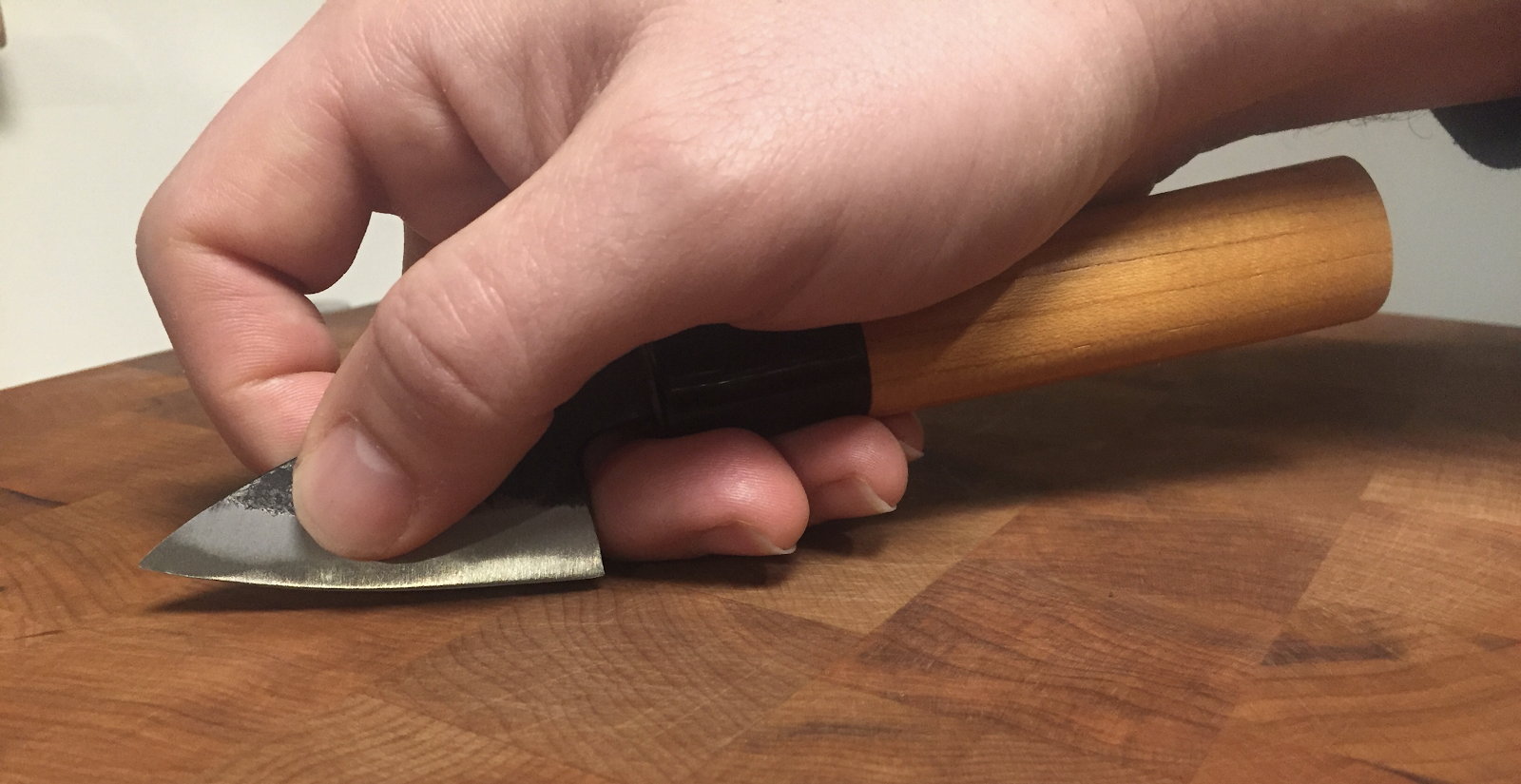
The small flat spot at the back yielded nicely chopped cucumbers with only a few accordion cuts, and along with the fine tip, I was able to finely chop onions.
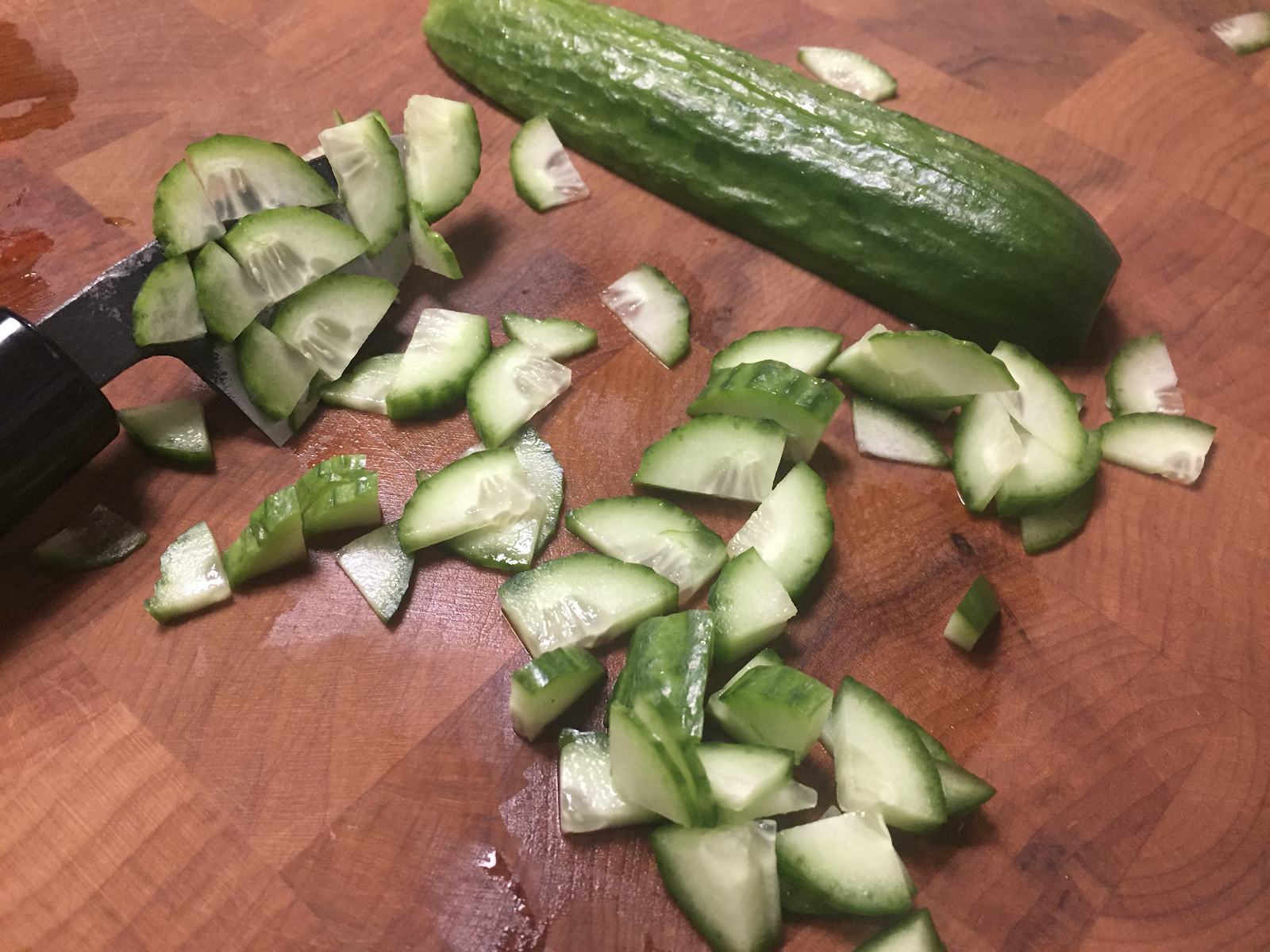
Specs
Total length: 184 mm
Edge length: 58 mm
Height at heel: 30 mm
Width at heel: 3.5+ mm
Weight: 52 g
Blacksmith: Yamada-san
Construction: Warikomi
Steel, core: Aogami #1
Steel, cladding: Soft iron (nantetsu)
Handle: Zelkova serrata (keyaki) wood
Ferrule: Black plastic
Summary
Most of us have at least a gyuto around 210-270 mm and a petty around 120-150 mm that we use on the cutting board. Conspicuously missing from most of our kits is a smaller sub-100, nay, sub-60 mm knife for the finest on-board tasks. The Okamitsu 55 mm might be the perfect choice to fill this void in your lineup. It also works well in hand off the board for some tasks.
Sold as a “ginger knife”, it is so much more. I threw (miniature) onions, tomatoes, cucumbers, carrots, and even cabbages at it, and it took them in stride. By the end of my tests, I wanted to call it the Little Cabbage Slayer: Chīsana Kyabetsu no Satsugai (according to Google Translate). Maybe it’s just because mine is an oversized 55, coming in at 58 mm, or maybe it is really just that good.
Fit and finish
Compared to the other knives I own, the Okamitsu 55 most resembles my Munetoshi gyuto (comparisons in pics): the fit and finish is rustic and emphasizes the functional. The edges of the spine and choil are rough, and the blacksmith’s finish (kurouchi) remains on the carbon steel cladding. There were no obvious grind issues (e.g., high/low spots), twists, or bends in the blade. The handle needed some beeswax/mineral oil on the ends, and I removed the lacquer from the blade, but the knife was otherwise ready to go. My knife came with a small nick on the edge just shy of the tip. No matter, though; it passed the paper test with the out-of-the-box edge.
Profile and grind
The profile is a typical gyuto, but in miniature and with the back three quarters of the blade missing. In fact, the edge follows the same curve as the distal end of my Kurosaki AS 210 mm gyuto. Indeed, one wonders if this knife design was conceived when the tip of a gyuto broke off in production and the industrious Yamada-san salvaged it for new purpose. It has a small flat spot at the back and belly through the middle and front. Distal taper along the spine is pronounced, starting quite thick and leading to a relatively thin tip. The grind can be likened to that of a “workhorse” - or ahem, “workpony” - starting thick at the spine, thinning at a relatively constant rate. The secondary bevel is a subtle convex, ground about 60:40.
Performance
The Okamitsu 55 handled a variety of product and tasks well. The balance point is behind the pinch grip at the back of the ferrule, making the blade feel lighter and nimbler than it otherwise would be.
The small flat spot at the back yielded nicely chopped cucumbers with only a few accordion cuts, and along with the fine tip, I was able to finely chop onions.
Last edited:




